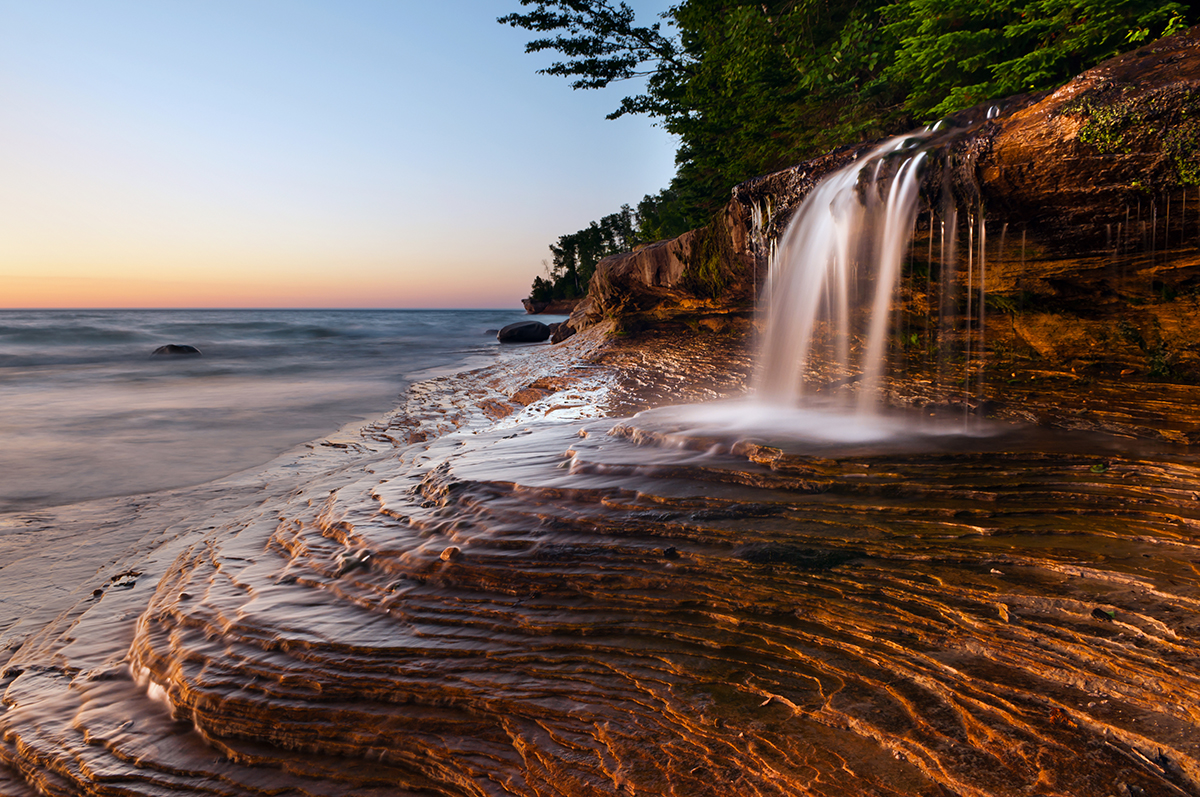WRITER | JULIE FORD
Billowing boughs of purple, pink, and white lilacs signal warmer weather has arrived on Mackinac Island. With their distinctive fragrance enveloping the island just a few precious weeks each year, celebrating these cherished blooms is a long-awaited merriment. Mackinac Island’s 70th Lilac Festival, June 8-17, is a ten-day event filled with guided lilac tours, culinary happenings, concerts, and the Lilac Festival Grand Parade.
While it is not exactly known how or when the first lilacs appeared on the 3.8 square-mile island, American essayist Henry David Thoreau visited Mackinac Island at the end of June in 1861 and noted in his journal that apple trees were blooming, and also penned “lilacs.” Gurdon Hubbard, who at 16 began working as a clerk for the American Fur Company, built “The Lilacs” in 1870 – one of the first cottages erected in the Hubbard Annex.
“We took core samples — little tiny slivers of wood — and from that counted the rings,” says Trish Martin, who earned a master’s degree in botany from Central Michigan University. She lives year-round on Mackinac Island and owns the Bogan Lane Inn. “We did this ten years ago, and the oldest ones were 29 inches in diameter or better, so we think they came in after the War of 1812.” In 1947, University of Michigan botanist Carl D. LaRue studied the lilacs and estimated one of the oldest trees to be 118 years old. This calculation possibly dates Mackinac Island lilacs to the late 1820s – well over 150 years old.
“The giants on Mackinac Island owe their stature to favorable growth conditions and a long period of undisturbed development.” – Carl D. LaRue
Why do the three species of lilacs, Common or French Lilac (Syringa vulgaris), Himalayan or Late Lilac (Syringa villosa), and Japanese Tree Lilac (Syringa reticulata or S. amurensis var. japonica) thrive on Mackinac Island? “Well-drained soil is predominantly what we have here,” explains Martin. “We’re mostly beach, and they don’t like wet feet. They have to have a cold winter to break buds, and they need a sunny space in the summer.” Martin continues, “The largest (Croatia) grow on limestone, and we are one big limestone rock all busted up.” In addition, she notes lilacs need a neutral pH between 6.5 and 7.5, and, to bud, the soil needs to reach 50 degrees. Since Michigan winters can vary, so can the lilac bloom times.
The common lilac is a member of the olive family, is a nonnative species to the US, and technically is a large flowering shrub that normally grows 8 to 12 feet in height. Far surpassing normal, some of the oldest and largest lilacs are scattered through town on Main Street, notably in front of the Ste. Anne’s Catholic Church rectory, on the lawn of the Harbour View Inn, and surrounding the Grand Cottage on Cadotte Avenue.
Long-established lilacs are found throughout the island, and younger plantings made in 1997 by the International Lilac Society are located along Market Street.
Martin says the abundance and size of Mackinac Island’s lilacs are unusual. “We call them trees here. Most people come here and cannot believe the lilac trees. Size matters – that’s what makes them quite impressive.”
Contact MackinacIsland.org








